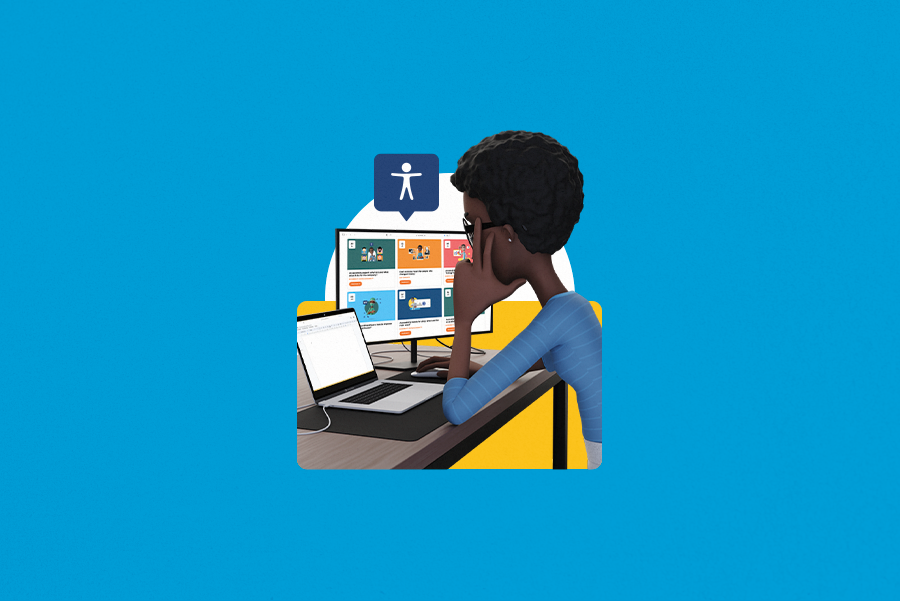
How does ASL automatic translation work?

Communication is the foundation of all human interactions. It is essential for understanding and connection between people, is it not? However, when it comes to communicating with deaf people or those with hearing disabilities, we still need to overcome several linguistic barriers that can hinder understanding between the deaf community and the hearing community.
Currently in the United States, almost 4% of the population is deaf, which equals around 11 million people, many of whom rely on ASL (American Sign Language) to communicate.
In this context, automatic translation in ASL emerges as an innovative and essential tool to promote inclusion and accessibility. Come with us and better understand how it works!
The importance of automatic translation in ASL
The importance of automatic translation in ASL is huge, as it plays a very important role in promoting inclusion and accessibility for deaf people and those with hearing disabilities. Here are some reasons for you to better understand its importance:
Facilitation of communication
Automatic translation in ASL facilitates communication between deaf and hearing people who do not master Sign Language. This is essential in multiple contexts, such as health, education, work, and daily interactions, where good communication is fundamental to ensure that all involved individuals understand the necessary information.
Digital inclusion
With technology advancement, a large amount of information and services are available online. Automatic translation in ASL makes this content accessible to deaf people, ensuring their digital inclusion and equal access to information.
Access to education
Automatic translation in ASL is a really valuable tool for deaf students, allowing them to access academic content in their natural language. This is essential to ensure that these people have the same educational opportunities as hearing individuals, as well as being part of a bilingual education program.
Accessibility in events and cultural activities
Unfortunately, events, lectures, plays, and other cultural activities often do not offer interpretation in ASL. Automatic translation in ASL can help fill this gap, allowing deaf people to access information about these activities in a more inclusive way.
However, it is essential to reinforce that automatic translation does not replace the need for human interpretation, especially when it comes to audiovisual content, events, or live interactions.
Autonomy and empowerment
Automatic translation in ASL gives deaf people more autonomy and control over their communication. This can increase their self-confidence and sense of empowerment, allowing them to participate more fully in society, carry out daily activities independently, and make informed decisions in various areas of their lives.
Technology as an ally of Sign Language
Technology has increasingly become a powerful ally in the search for accessibility and inclusion of people with disabilities. When it comes to ASL, many technological advances, especially in Artificial Intelligence, have been developed to provide accurate and efficient automatic translations, making communication more accessible and fluid!
Text translation into ASL
One of the most common forms of automatic translation in ASL is the conversion of written texts into signs. Through algorithms and machine learning models, automatic translation systems are able to understand the text and generate a sequence of corresponding signs in ASL.
This technology is especially useful in virtual environments, such as in apps or in making online content in ASL.
Image translation into ASL
In addition to text translation, it is also possible to translate images into ASL. For example, in some mobile apps, you can use the camera to capture an image of a text or object and receive an automatic translation into ASL! This significantly expands the possibilities of communication and access to information for deaf people or those with hearing disabilities. Very cool, is it not?
Audio translation into ASL
Another important application of automatic translation in ASL is the conversion of audio into signs. This allows deaf people or those with hearing disabilities to access some audio content through automatic translation.
This technology is essential to ensure equal access to information and culture for all people, being mainly used as a teaching tool for those learning to communicate in ASL.
App for Sign Languages automatic translation
Several apps have been developed with the goal of providing automatic translation for Sign Languages, and we cannot leave out the Hand Talk App from this list!
It uses technologies such as voice recognition and natural language processing to offer accurate translations to ASL and Libras (Brazilian Sign Language) automatically. Oh, and our app also features OCR (optical character recognition), which allows translations to be made from images.
Hand Talk Plugin: translation of texts on websites into ASL
Another great example of the application of automatic translation in ASL is the Hand Talk Plugin, an assistive tool that enables the translation of texts and images with alternative descriptions on websites into ASL and Libras automatically.
With our digital accessibility plugin, companies can make their website content accessible to deaf people and those with hearing disabilities, promoting digital inclusion and equal access to information!
Oh, the Hand Talk Plugin also relies on many other assistive features that cover an even larger audience of people with disabilities, being the ideal solution for you to get in touch with the world of digital accessibility.
Conclusion
Automatic translation in ASL is a powerful tool that promotes inclusion and accessibility for deaf people and those with hearing disabilities. Through the growing number of technological advances, we can overcome language barriers and facilitate communication between deaf and hearing individuals in multiple contexts!
Do you want to know more about how this technology works? Then talk to Hand Talk experts and learn more about our solutions: the Hand Talk App and the Hand Talk Plugin!


